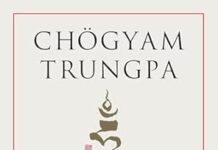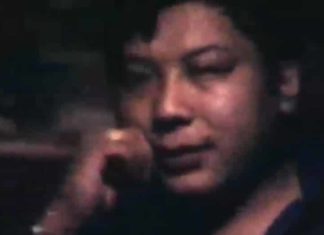
Available from Archway Publishing
In EIGHT STEPS TO AN AUTHENTIC LIFE, Buddhists will instantly recognize the Buddha’s Noble Eightfold Path, fleshed out with insight, care, and attention, while non-Buddhists will discover a treasure trove of sage advice and guideposts for leading a purposeful and wholesome life.
The eight steps are: right view, right intention, right speech (communication), right conduct, right livelihood, right effort, right meditation, and complete integration, or right absorption or union. The author is Patricia Ullman, a senior teacher and meditation instructor who trained in the Tibetan Buddhist and Shambhala traditions under the direction of Chogyam Trungpa, Rinpoche. She is careful to point out that “right” here doesn’t mean right vs. wrong or imply any kind of judgment. It means “complete” or “whole.” One by one, she explores the meaning and utility of each of the eight steps, embellishing through stories, and offering slogans for contemplation and instructions for hands-on application.
Right view, she says, is the compass we use when making decisions, underscoring its pivotal role in our lives. When we are clear about our vision, our attitude and actions are cohesive. “With right view comes a natural understanding that you are basically good, and that your mind’s nature is one of openness and possibility,” she writes, adding that fearlessness can then greet whatever life throws our way. “Chogyam Trungpa often described this fundamental possibility as being the essence of bravery,” she adds, “embodied by a warrior with a strong back and an open, broken heart.”
This reader couldn’t help but wonder what sort of world we would be living in if people in positions of power (and others) invested some time and effort in developing a view that is in accord with basic sanity, instead of continuing to rely on the default view they stumbled upon by happenstance.
Ullman’s examples infuse each of the steps on the path with insight and relevance. In “Loving the Journey,” she defines right effort as “the natural energy you have when you are fully present. It arises from the natural tendency of your mind to open suddenly in any situation, as if awakening from a trance.” Faced with the death of her father, she rallied in spite of her intense grief. “I was able to flow with this unbearably difficult experience because of my training in meditation and my deep love for my father,” she writes. “And because of this, it was one of the most vivid, outrageously brilliant experiences of my life, exhilarating in its exquisite pain and love.”
The path Ullman is proscribing in order to bring one’s life in line with the Noble Eightfold Path is squarely based in meditation. “There is no other way of attaining basic sanity than the practice of meditation,” she quotes Chogyam Trungpa, Rinpoche as having said. “Absolutely none.”
Ullman explains the centrality of mindfulness meditation: “The simple technique in the meditation practice of letting your thoughts go and returning to the breath, again and again, without judgment, reverses your habit of clinging desperately and blindly to your self-image project—what you think you need to perpetuate constantly in order to feel secure and appear in a certain way to yourself and others. Through mindfulness meditation practice, you begin to loosen this fearful, habitual clinging and become more open, relaxed, and present.”
Aided by colourful, original language, Ullman’s writing is easy to relate to. “Having an out-of-control mind creates a lot of unnecessary stress, because you are constantly trying to navigate through an endless clamour of ricocheting thoughts, which spark emotional responses in endless chain reactions. This makes it very difficult to relate fully with what is in front of you, as your attention goes in and out of focus.”
Every now and again, a unique phrase breathes life writ large into these 90 pages. In her discussion on right communication: “Not being afraid to allow space within your words, with pauses to allow genuineness to arise.” (my emphasis)
Eschewing time-worn explications of the eightfold path, Ullman brings the discussion up to date without sacrificing the integrity of its age-old meaning. For example, she defines the ethics of right livelihood as “honesty and nonexploitation.”
For meditation instructors and teachers wishing to present on the Noble Eightfold Path—to Buddhists or in a secular context—Eight Steps to an Authentic Life is a must read, as it is for anyone wishing to benefit from the timeless wisdom contained within these pages.
The denouement is in the last several pages, where Ullman lays out compact practice instructions related to each of the eight steps to aid readers in incorporating them into their lives.
© Andrew Safer 2018
Patricia Ullman, a senior teacher and meditation instructor in the Tibetan Buddhist and Shambhala traditions, studied and practiced for more than forty years with many renowned teachers. She earned a JD degree and has spent her professional life in law, mediation, restorative justice, and nonprofit leadership. Ullman lives in the Washington, DC, area and is a meditation instructor and consultant for mindfulness organizations, law firms, hospitals, and private clients. Visit her online at peaceofourminds.org.
















